We visited the National Museum of the US Air Force in Dayton, Ohio on our way to Oshkosh. This is a two-day museum if you want to read more than half of the signs and absorb the history and technical information that is being communicated (vastly more detail than at the Smithsonian Air and Space). The experience starts with words from President Nixon:
The curators are less prone to the Wright Brothers worship that pervades Dayton:
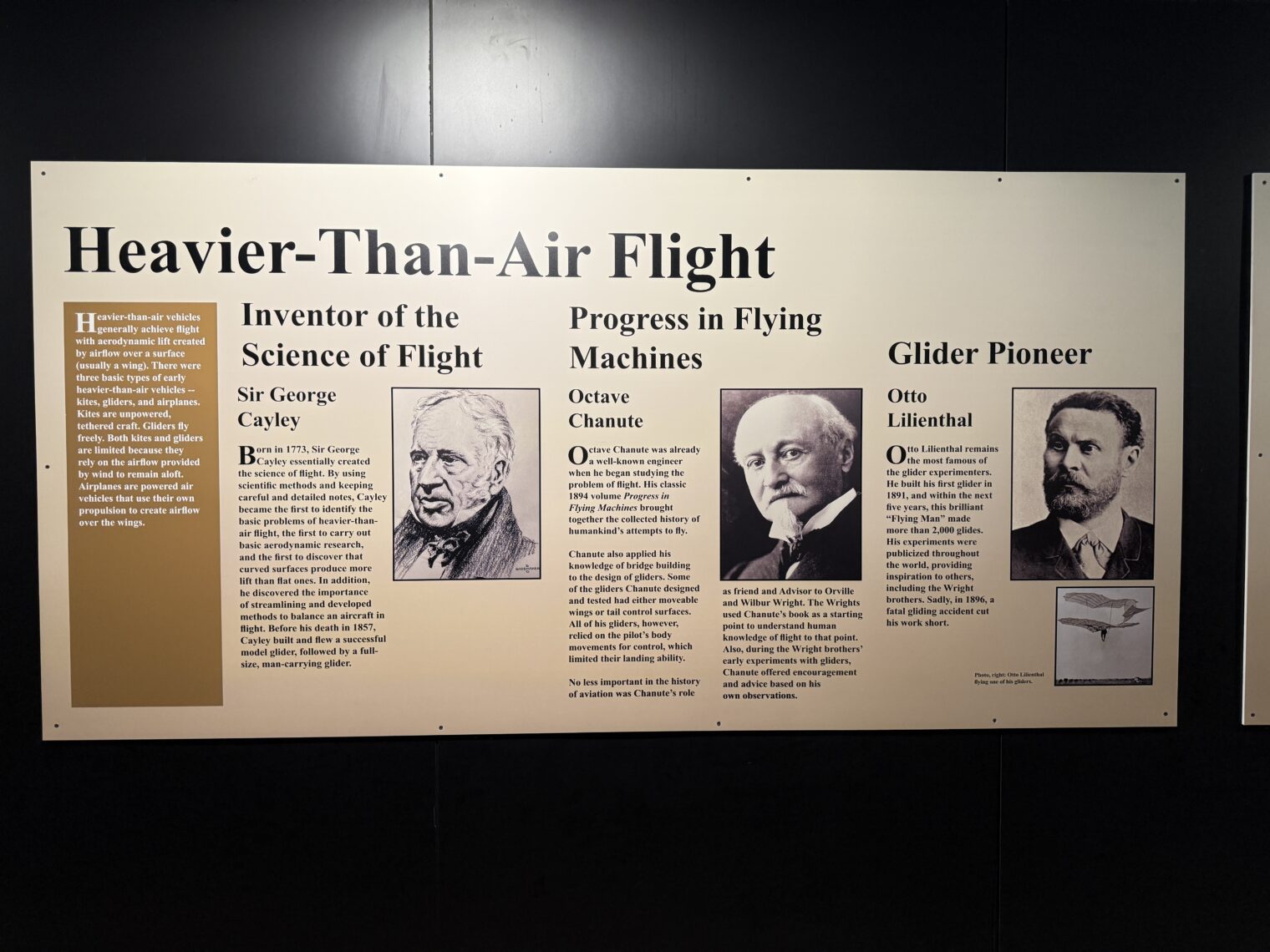
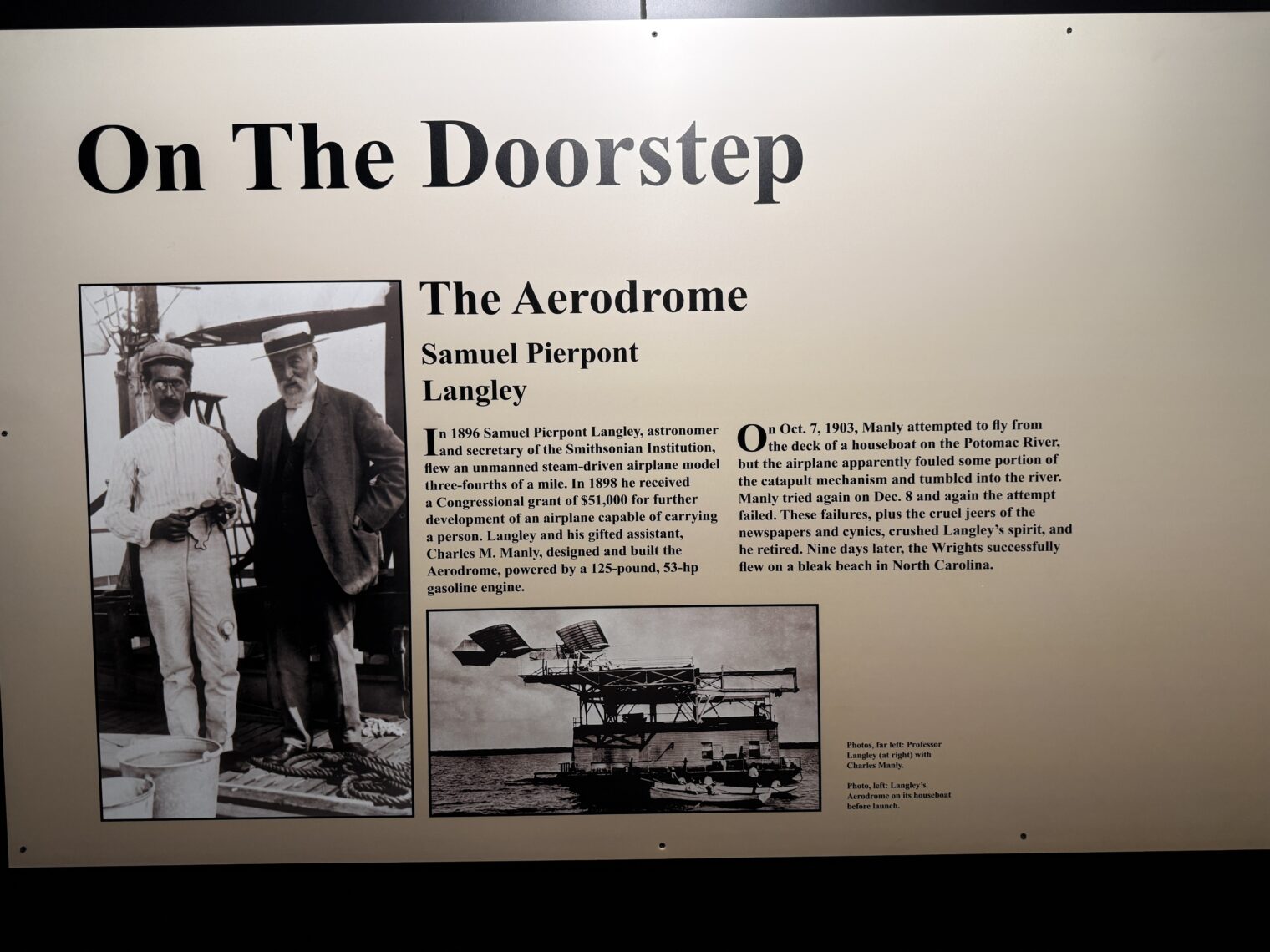
A Jenny is exhibited and also explained:
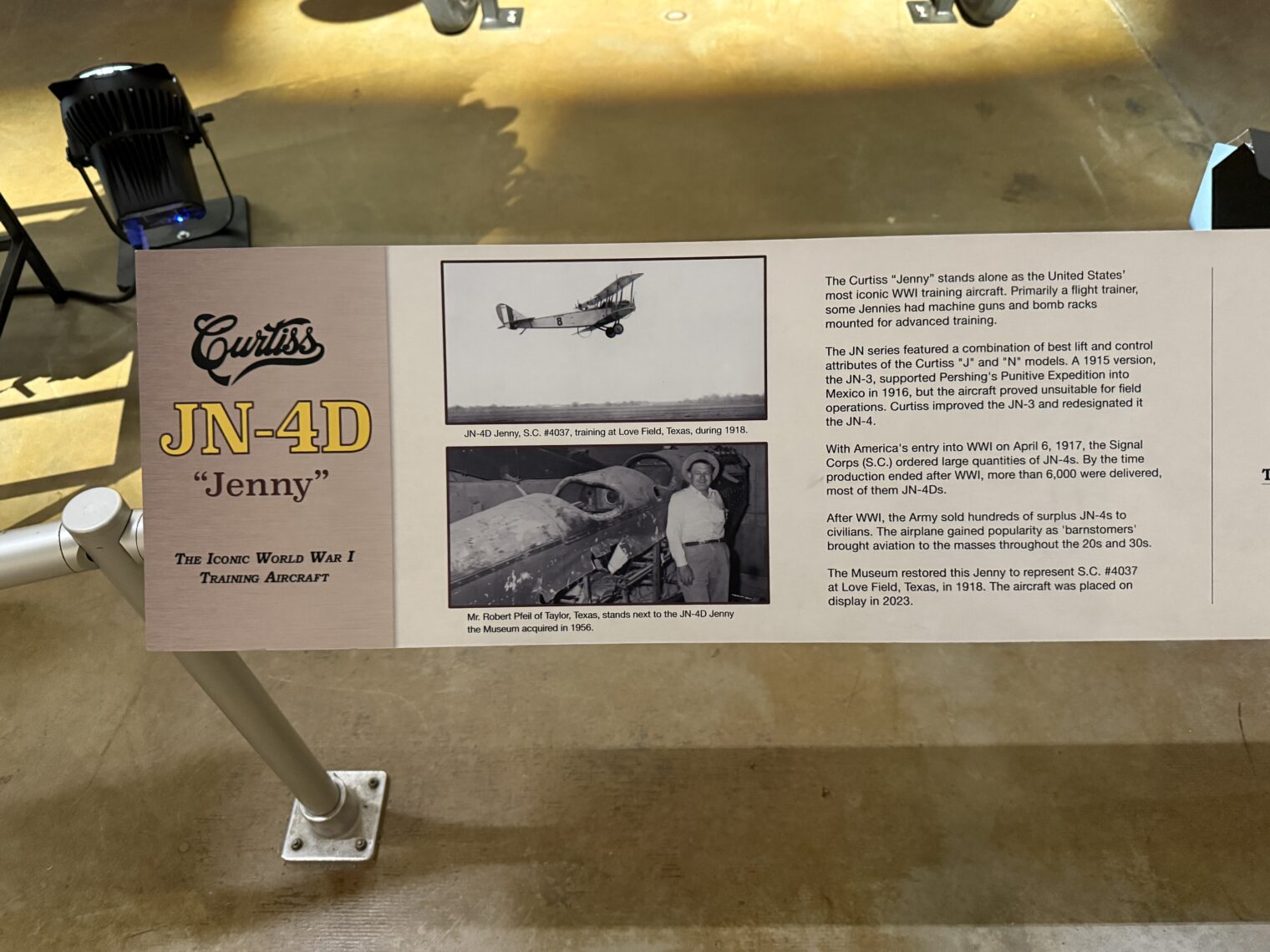
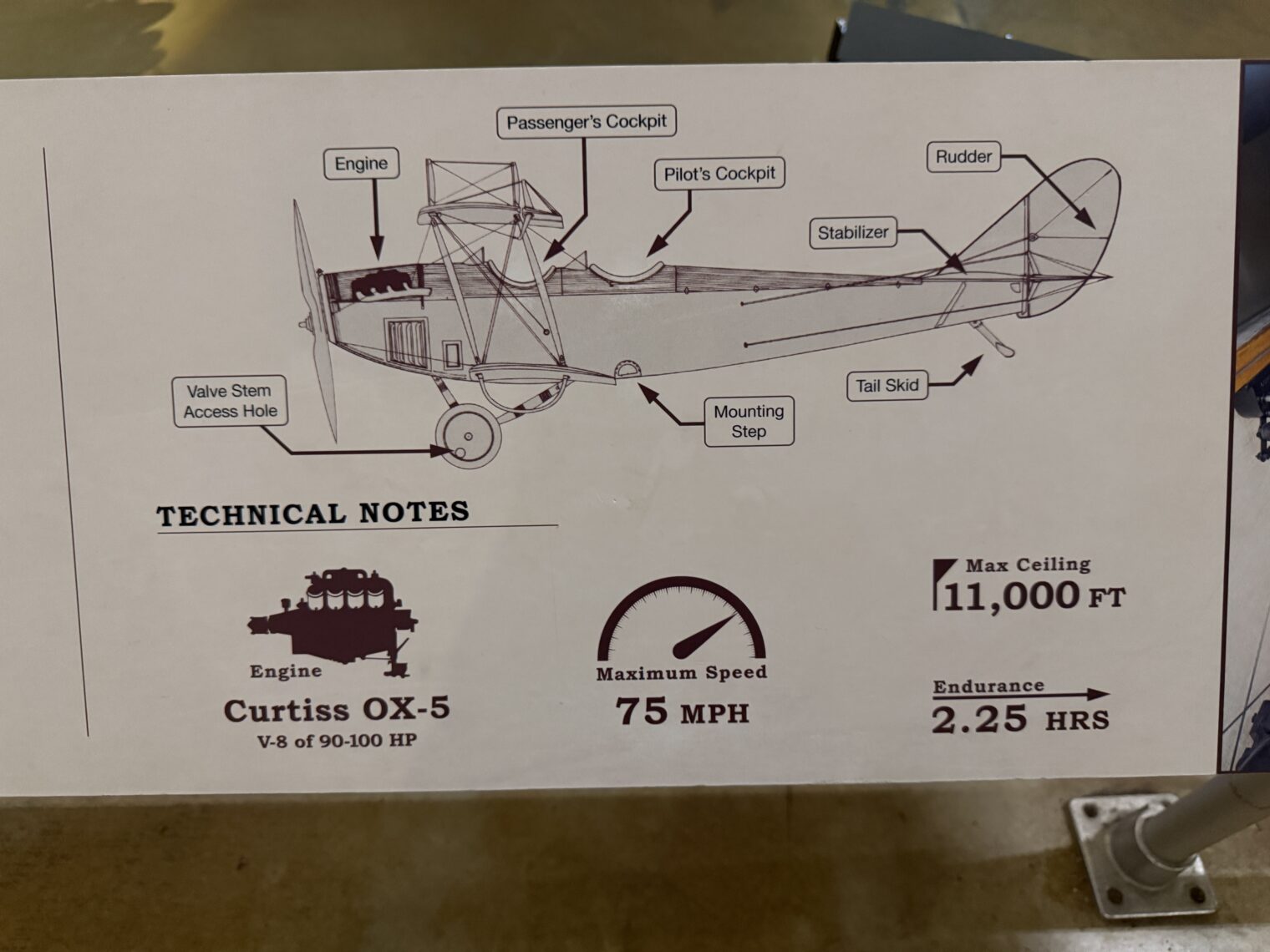
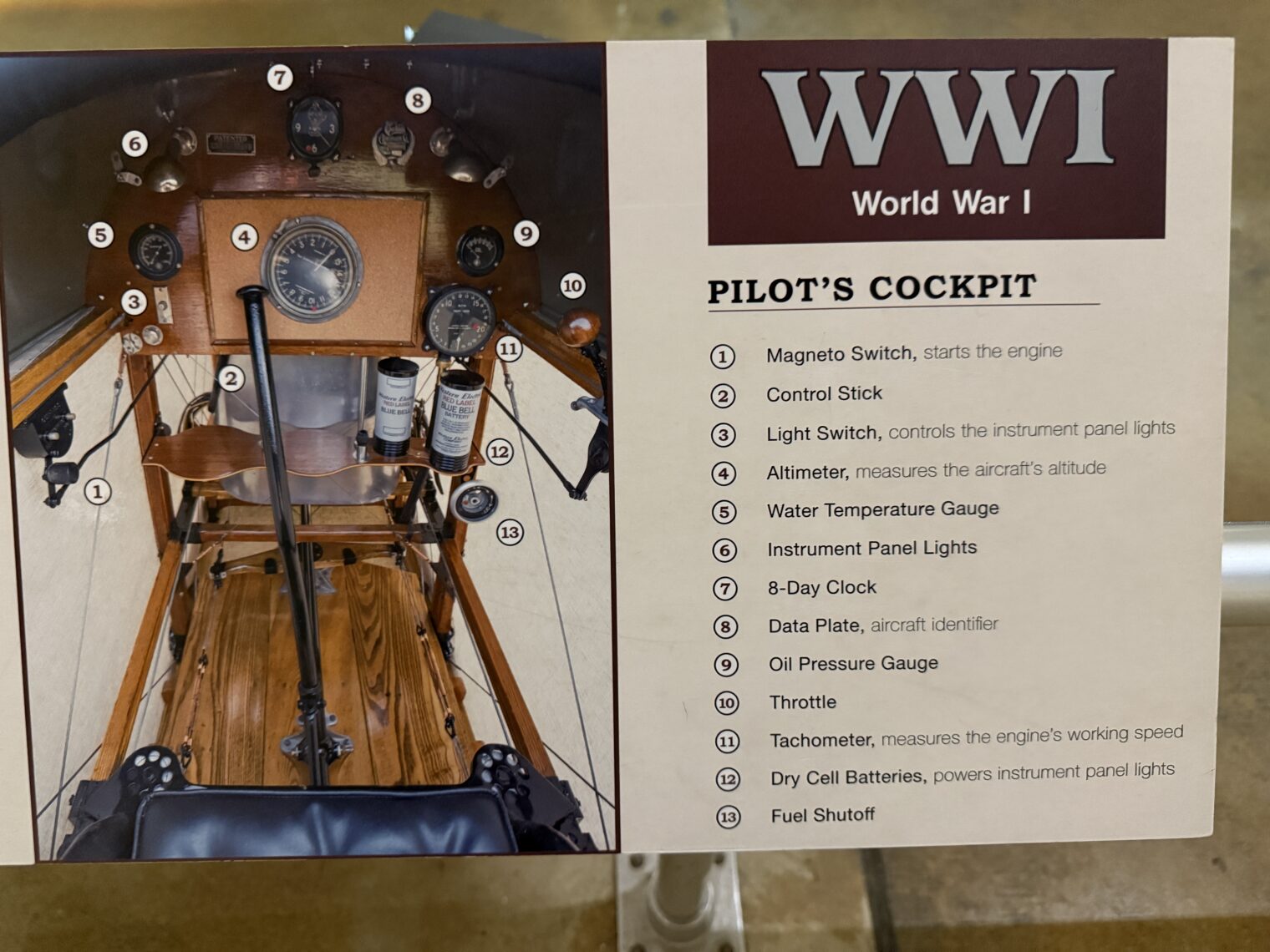
The museum seems to be run by a separate foundation so they’re perhaps not required to follow Defense Secretary Pete Hegseth’s orders to refrain from dividing military personnel according to victimhood group. The museum celebrates Eugene Bullard, for example, not for being a military aviator but for being the “first Black military aviator”:
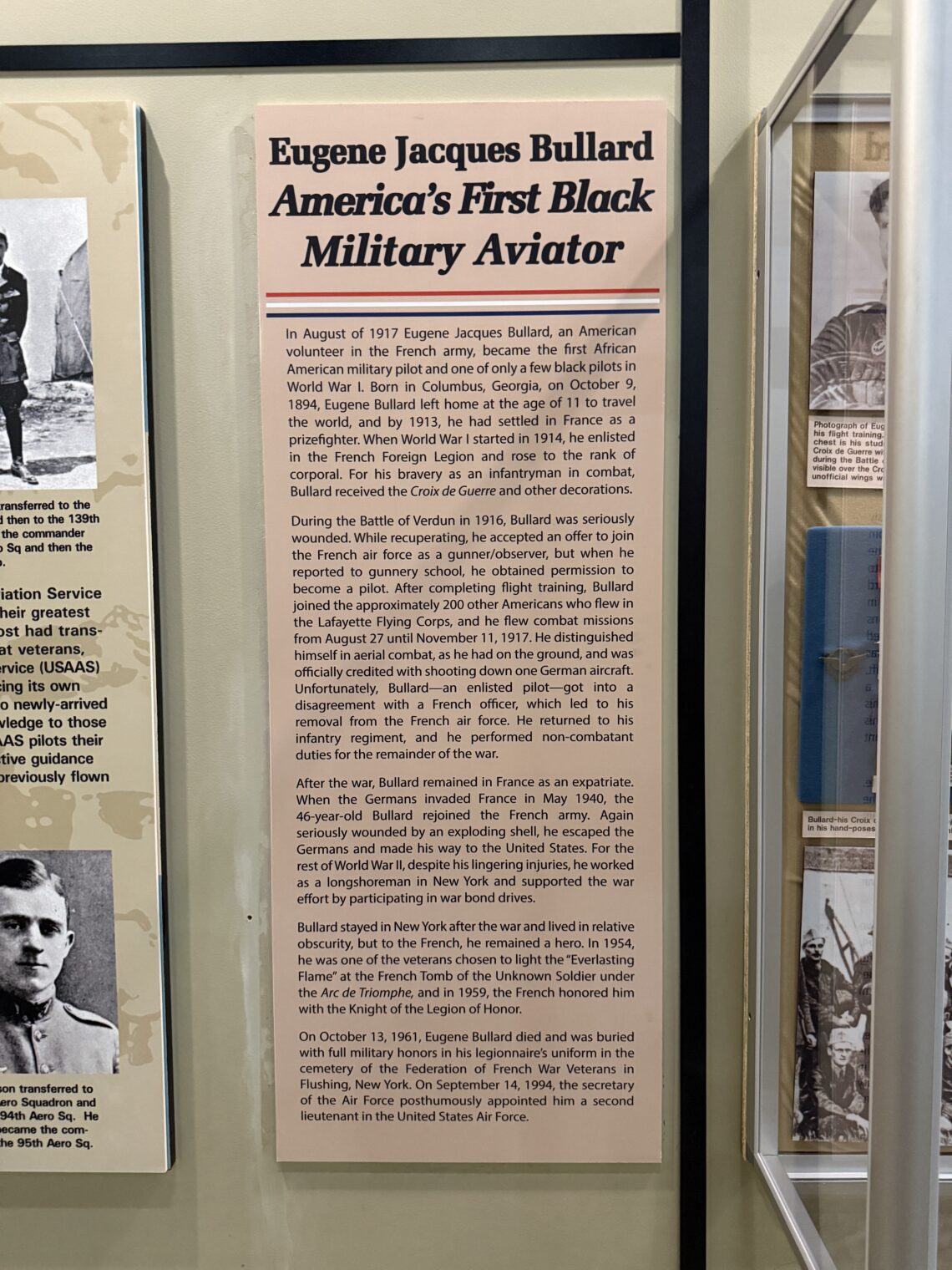
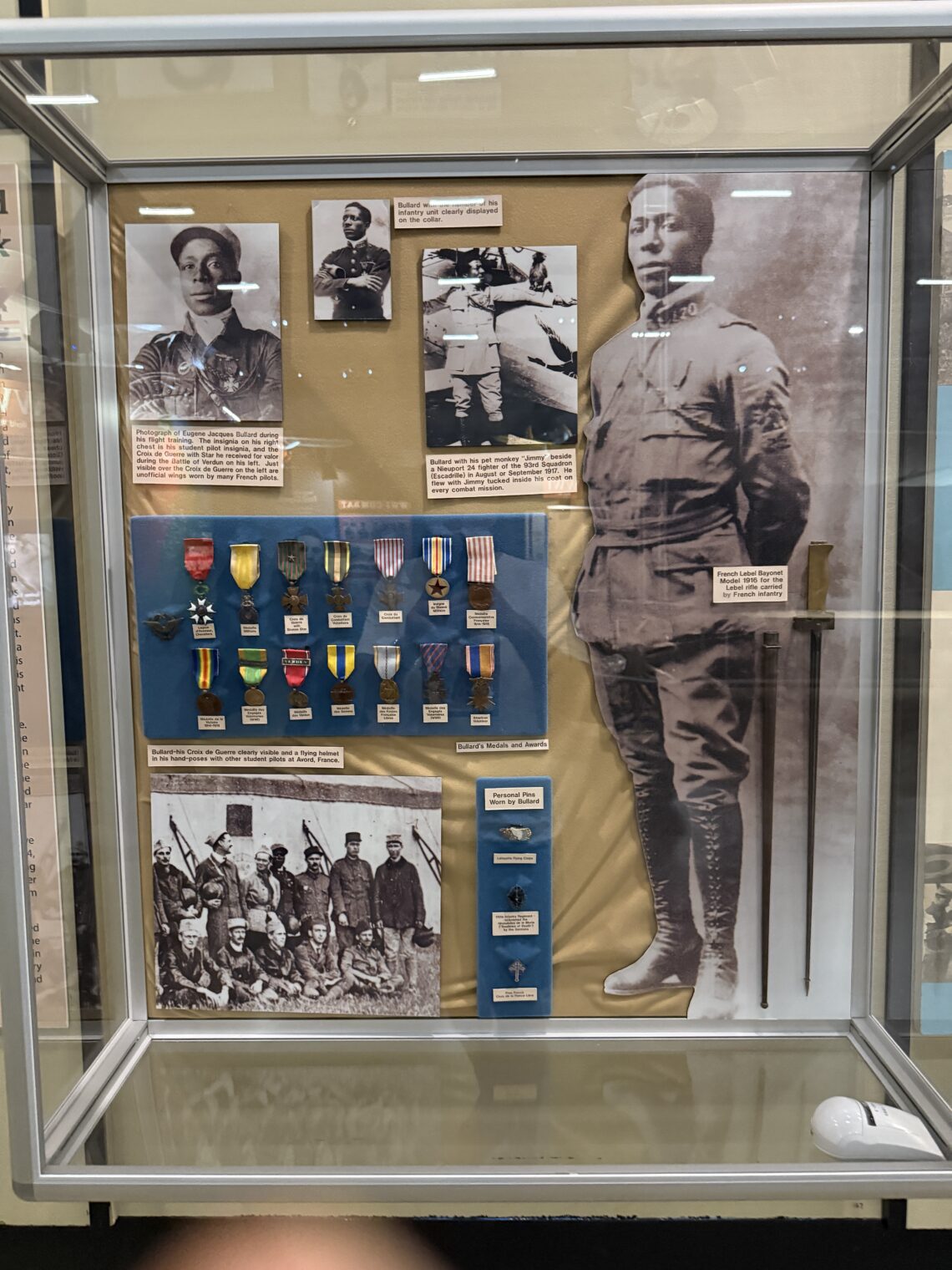
The drones that have transformed today’s battlefield were initially developed in Dayton, Ohio during WWI:

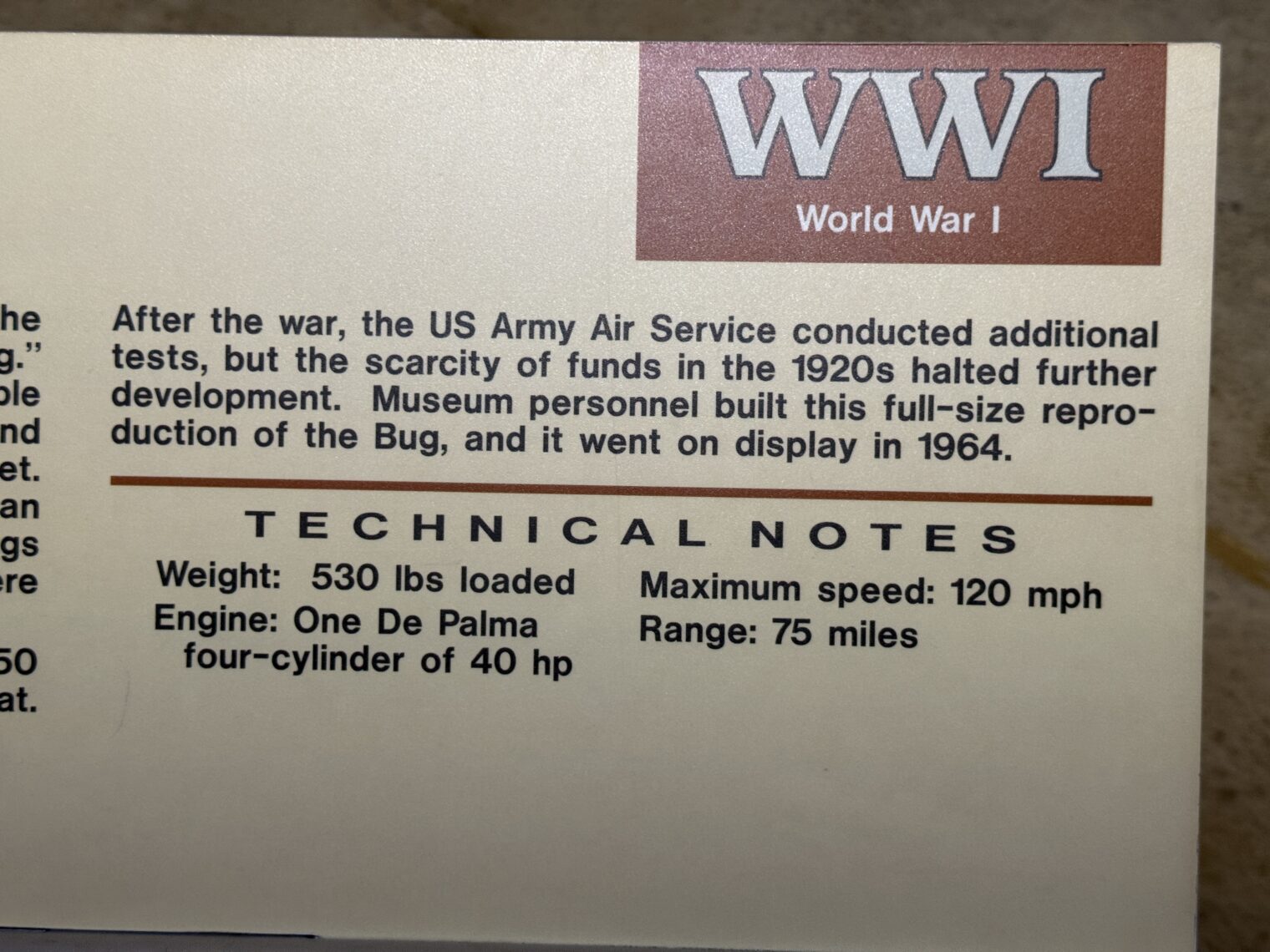
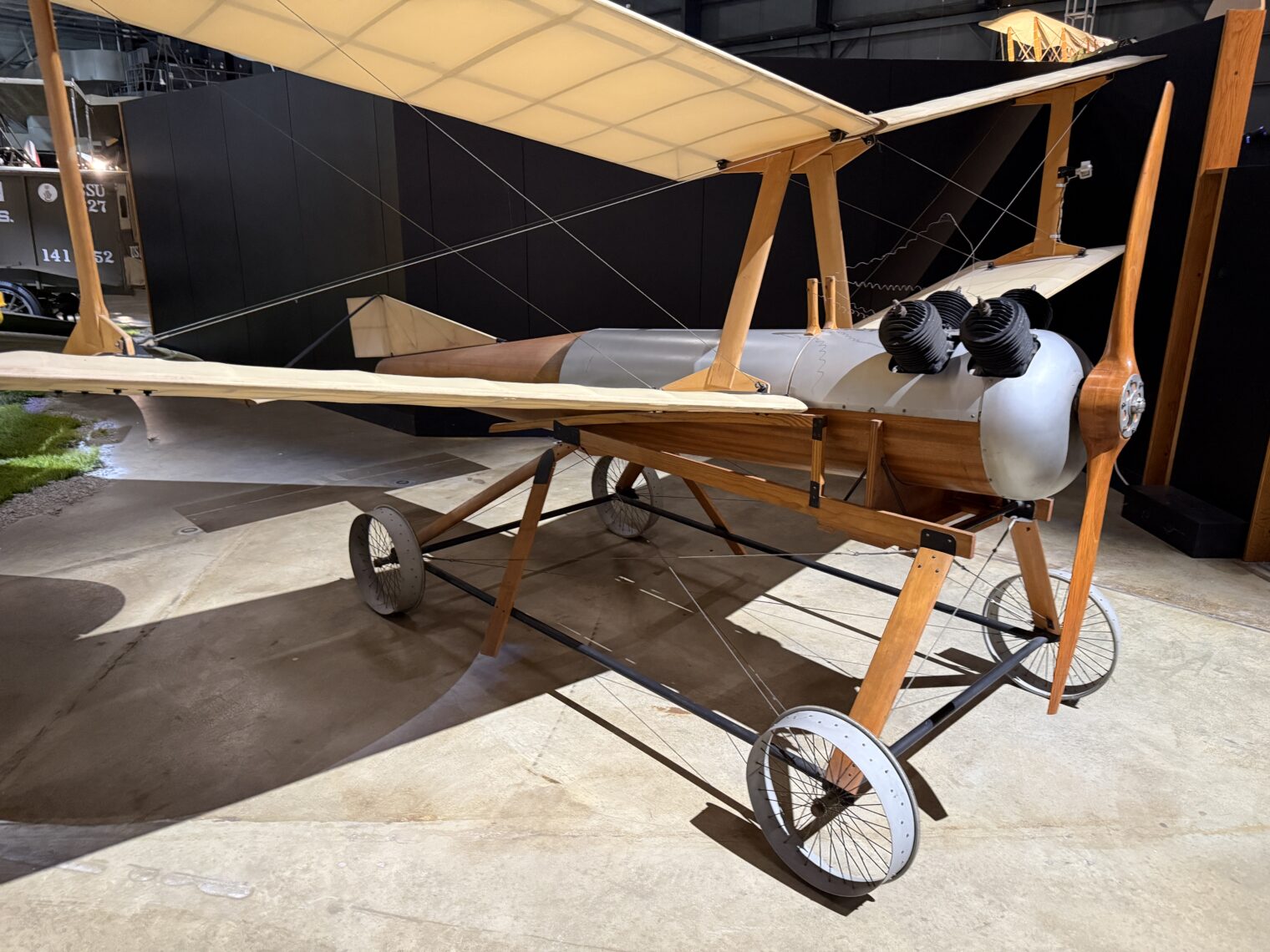
Here’s the only surviving Martin B-10 1930s bomber, out of 348 built:
The other side of the first massive hangar is devoted to more familiar World War II aircraft. Visitors are reminded that it was women who fought and won the largest battles, e.g., against bias, of World War II:
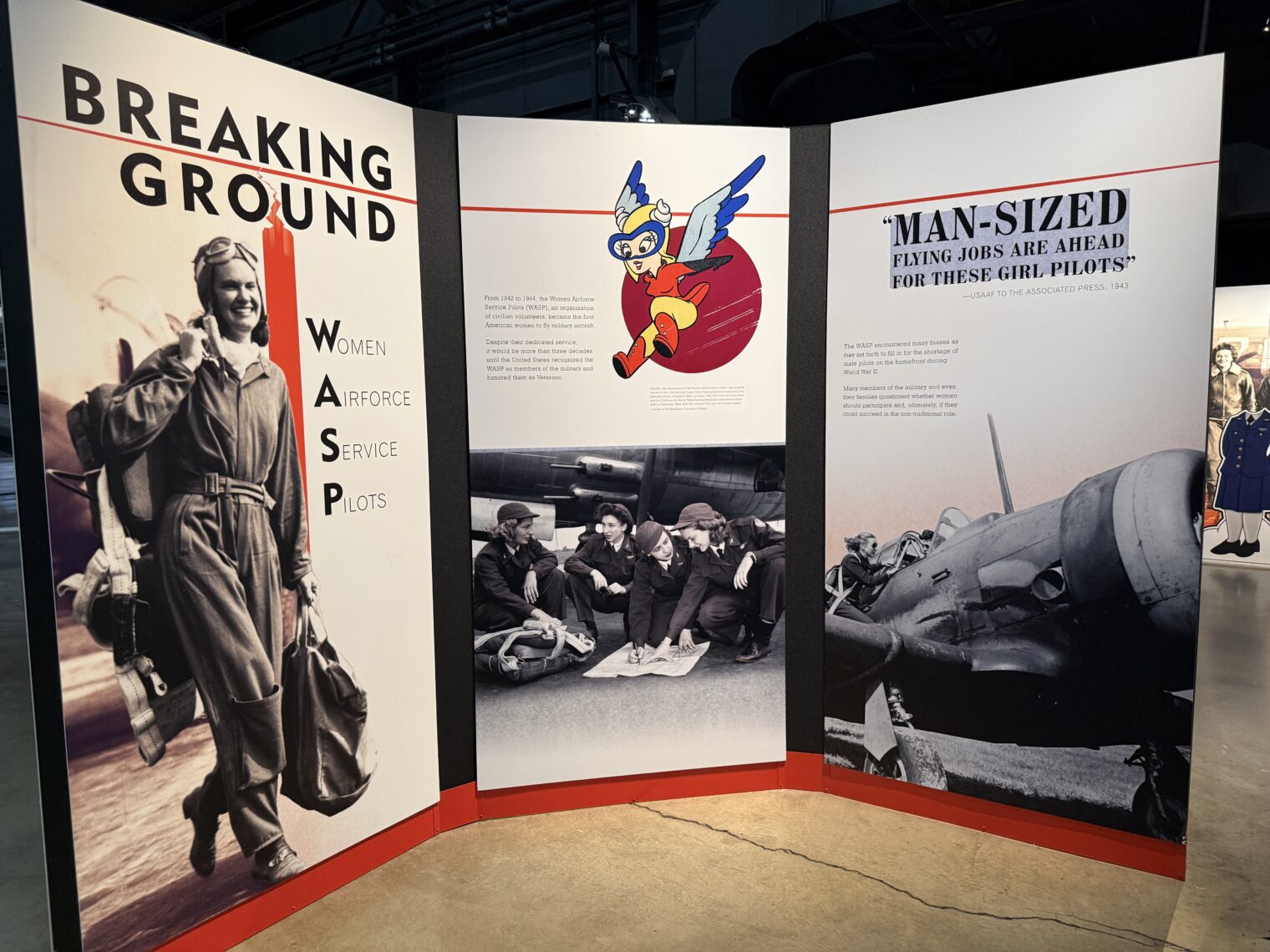
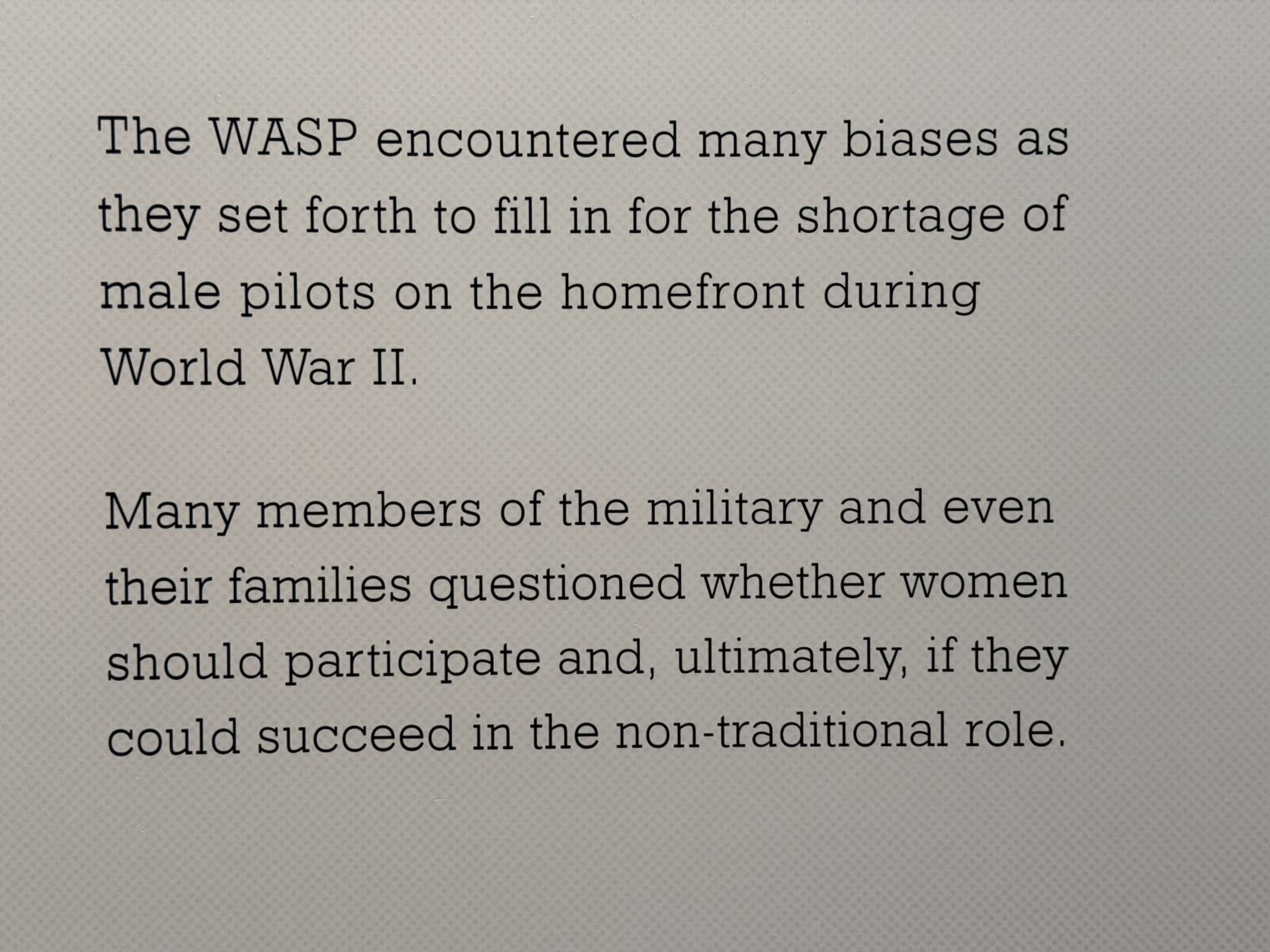
Here’s a less-familiar Douglas B-18:
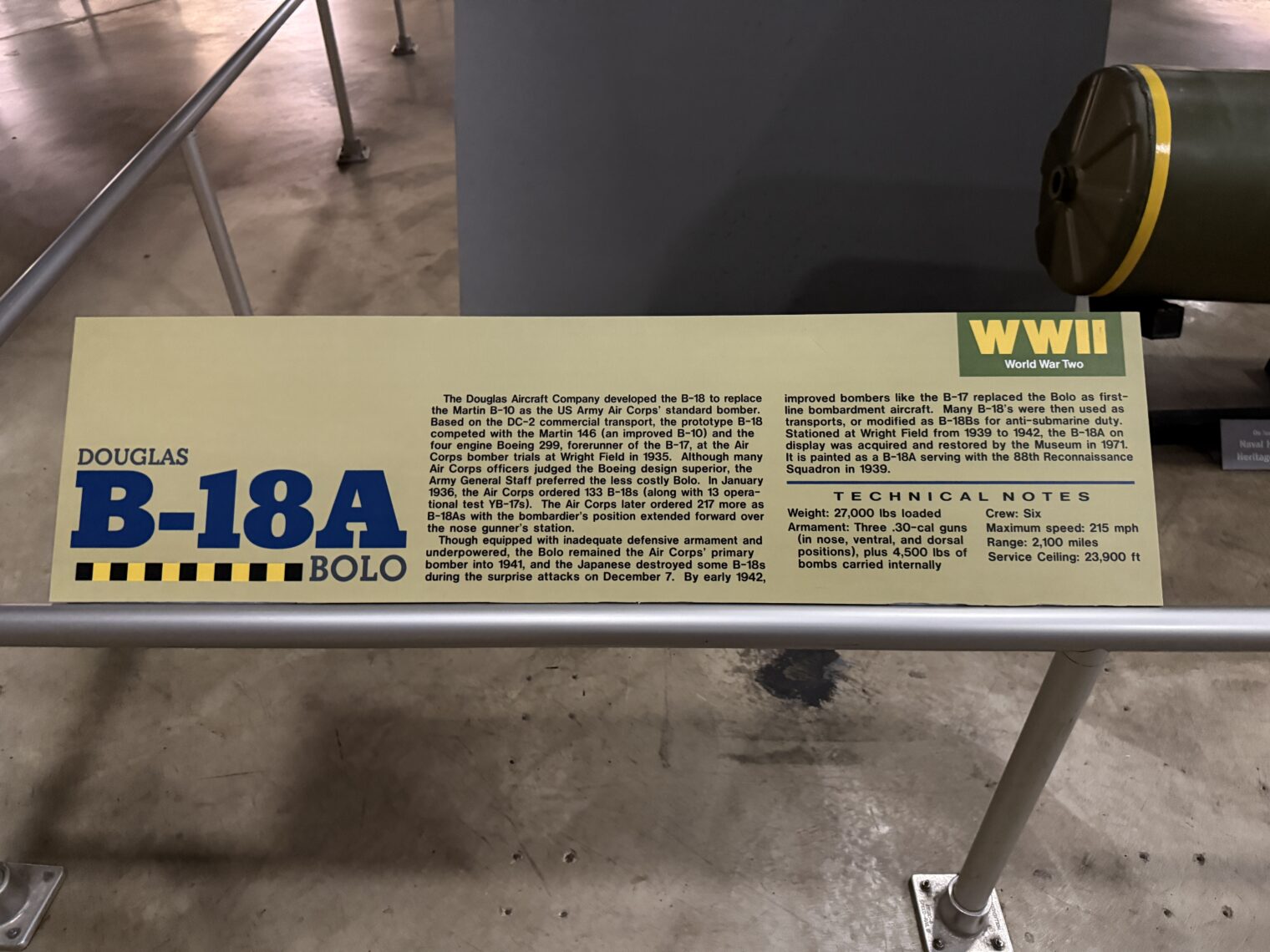

At least in the signage, there are few mixed feelings regarding the dropping of atomic bombs on Japan. The B-29 that devastated Nagasaki is on display:
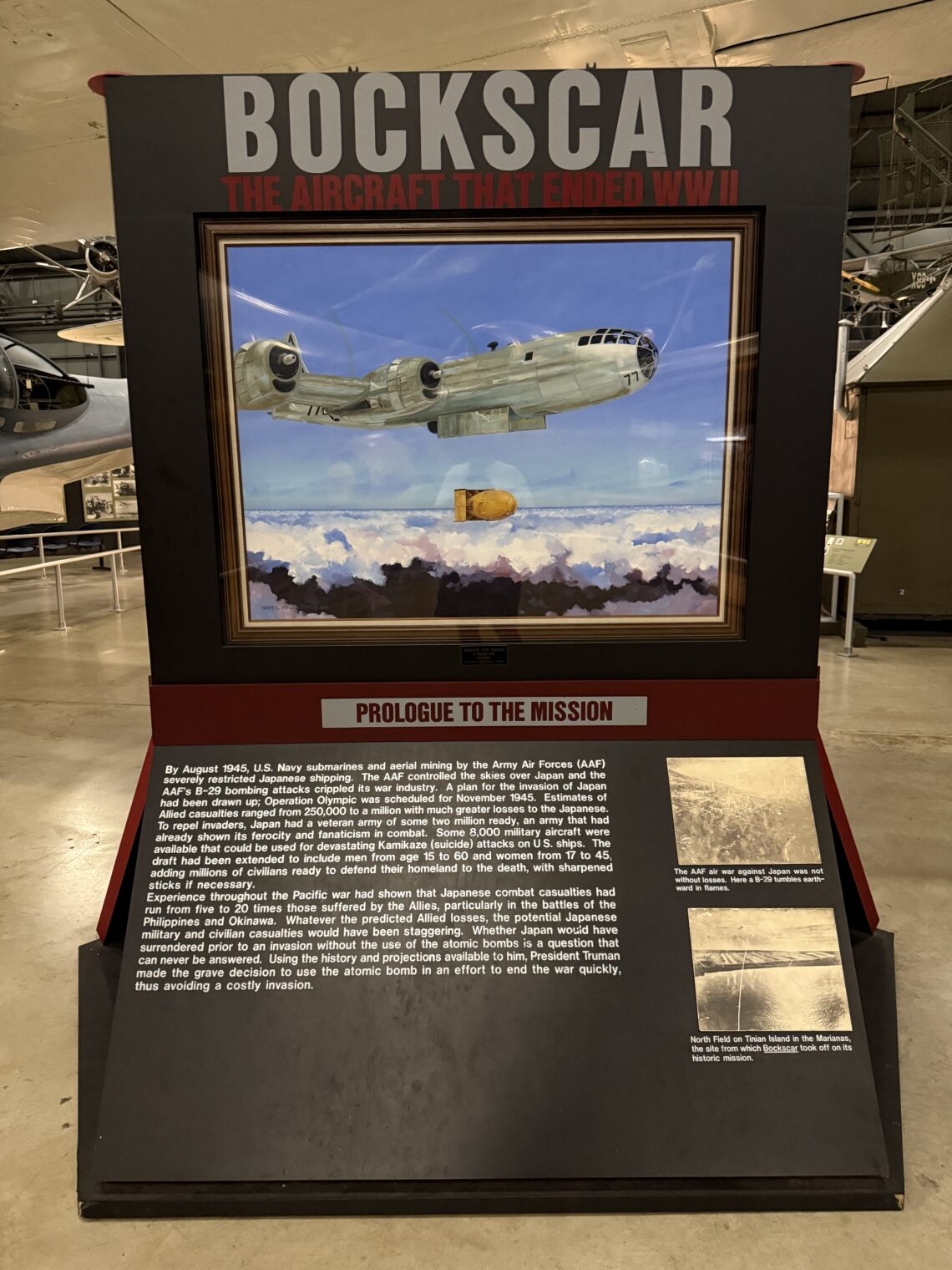
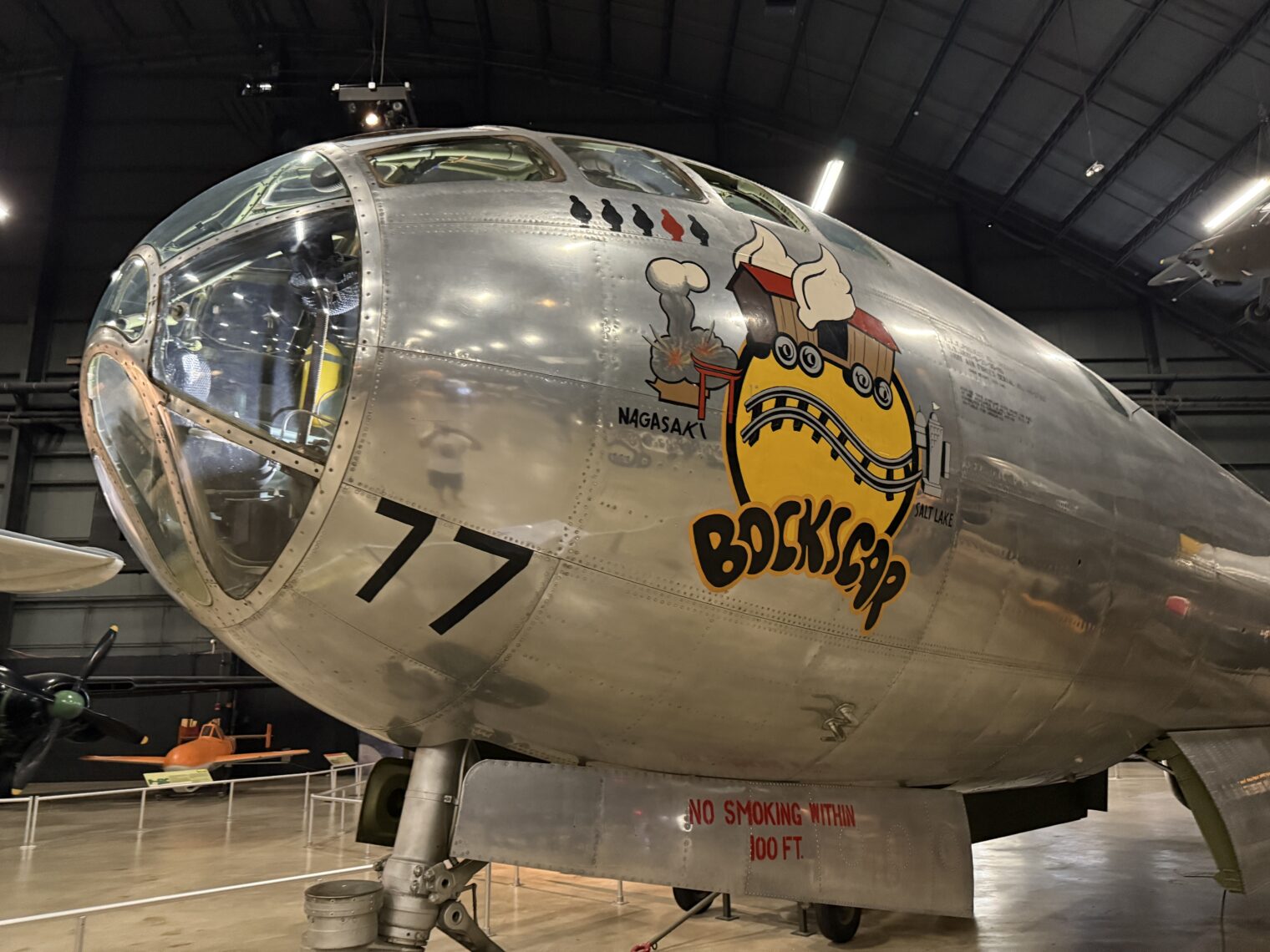
On a more cheerful note, a PBY is painted with the rafts of the aviators rescued:
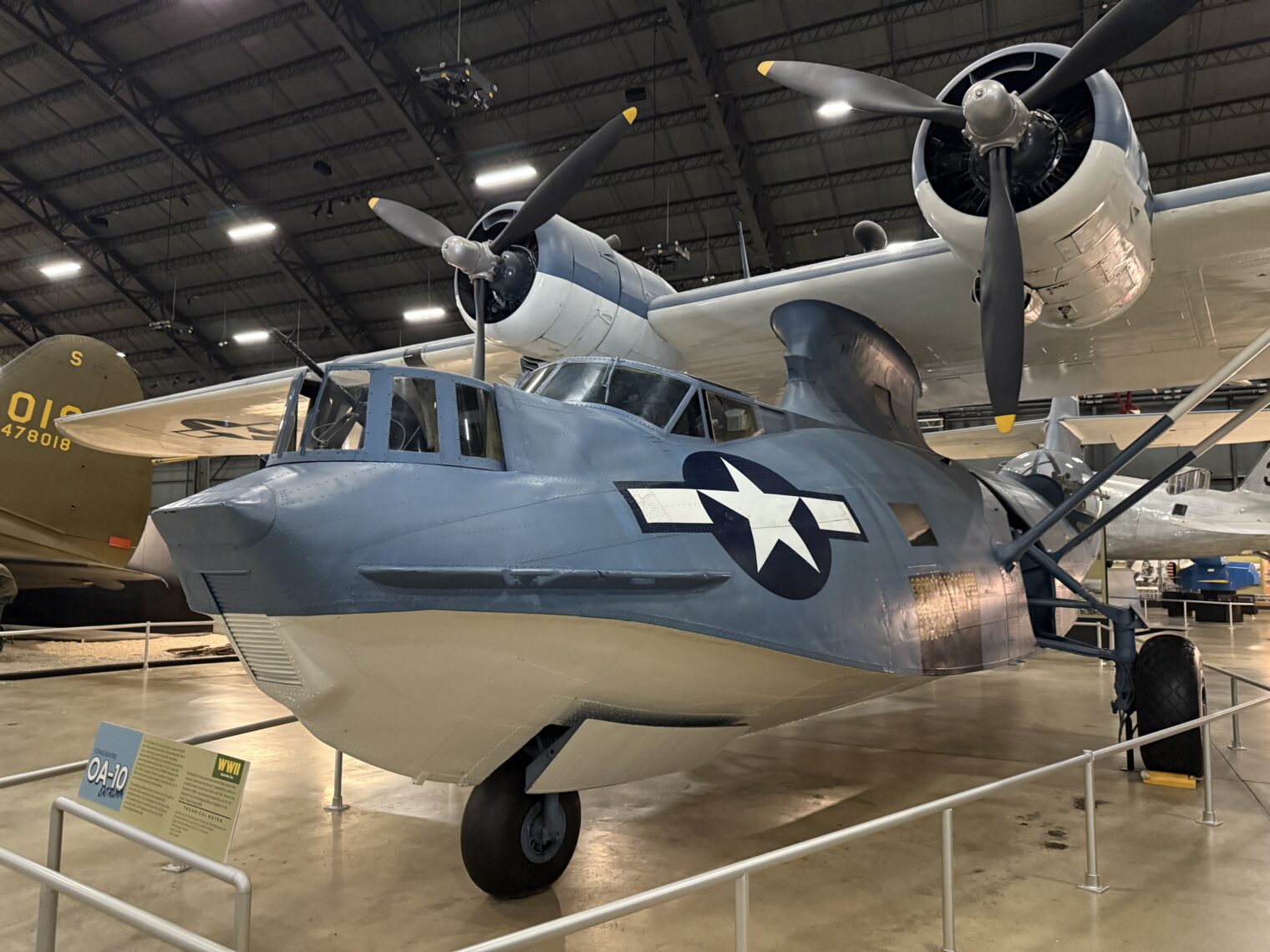
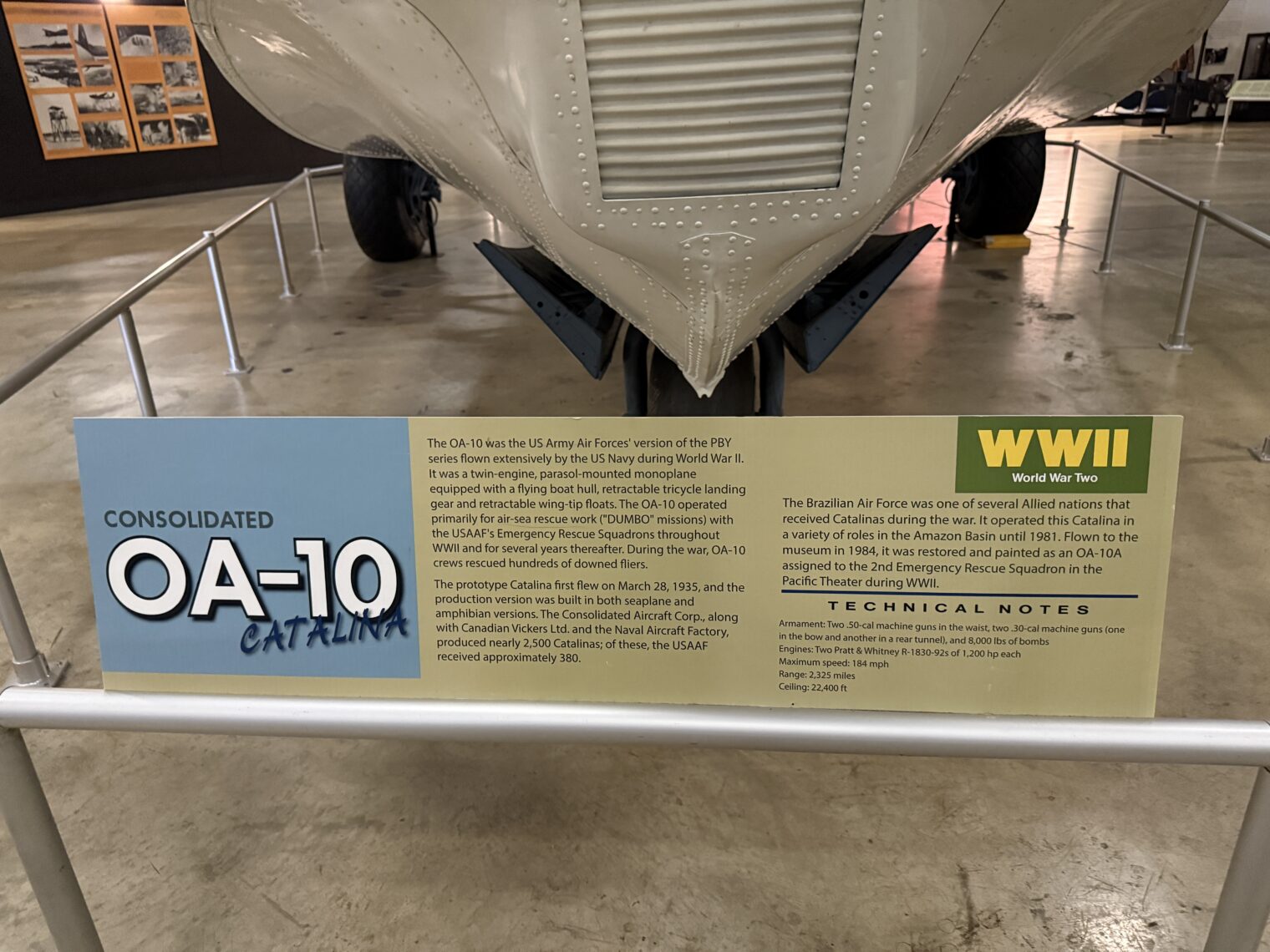
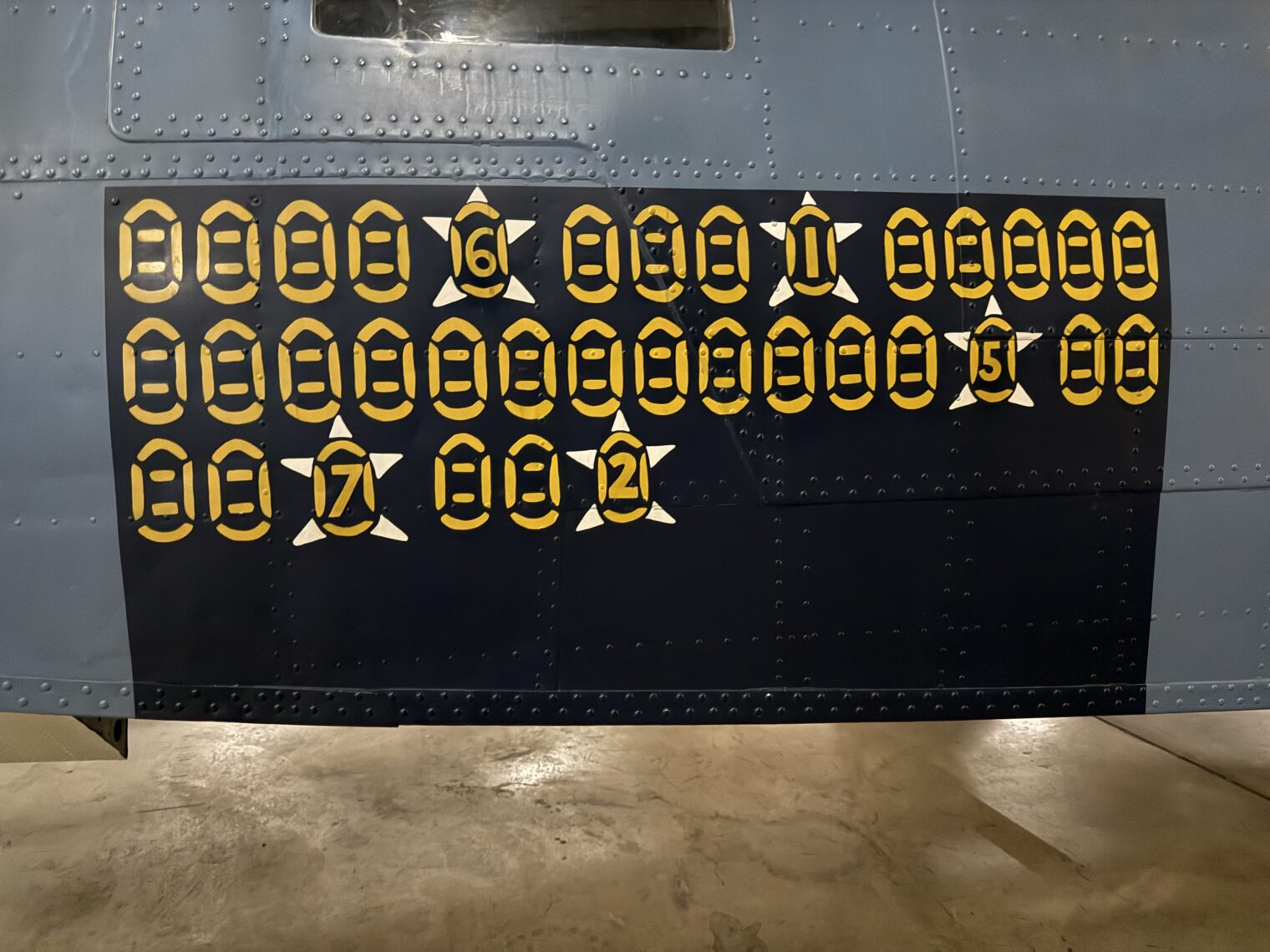
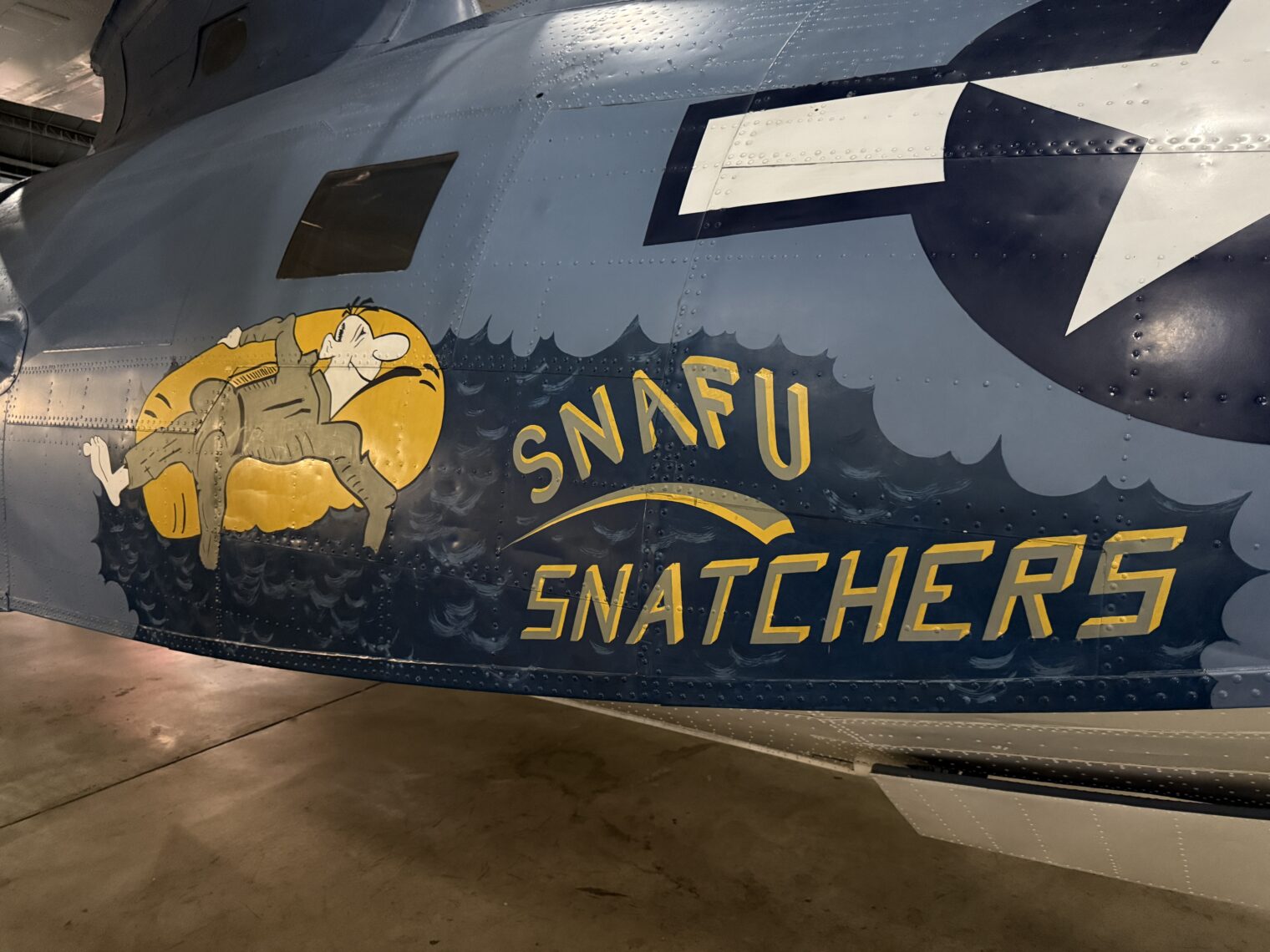
An original Me 262 is displayed along with a cutaway Jumo engine (note the Donald Trump/Elon Musk symbol on the tail):
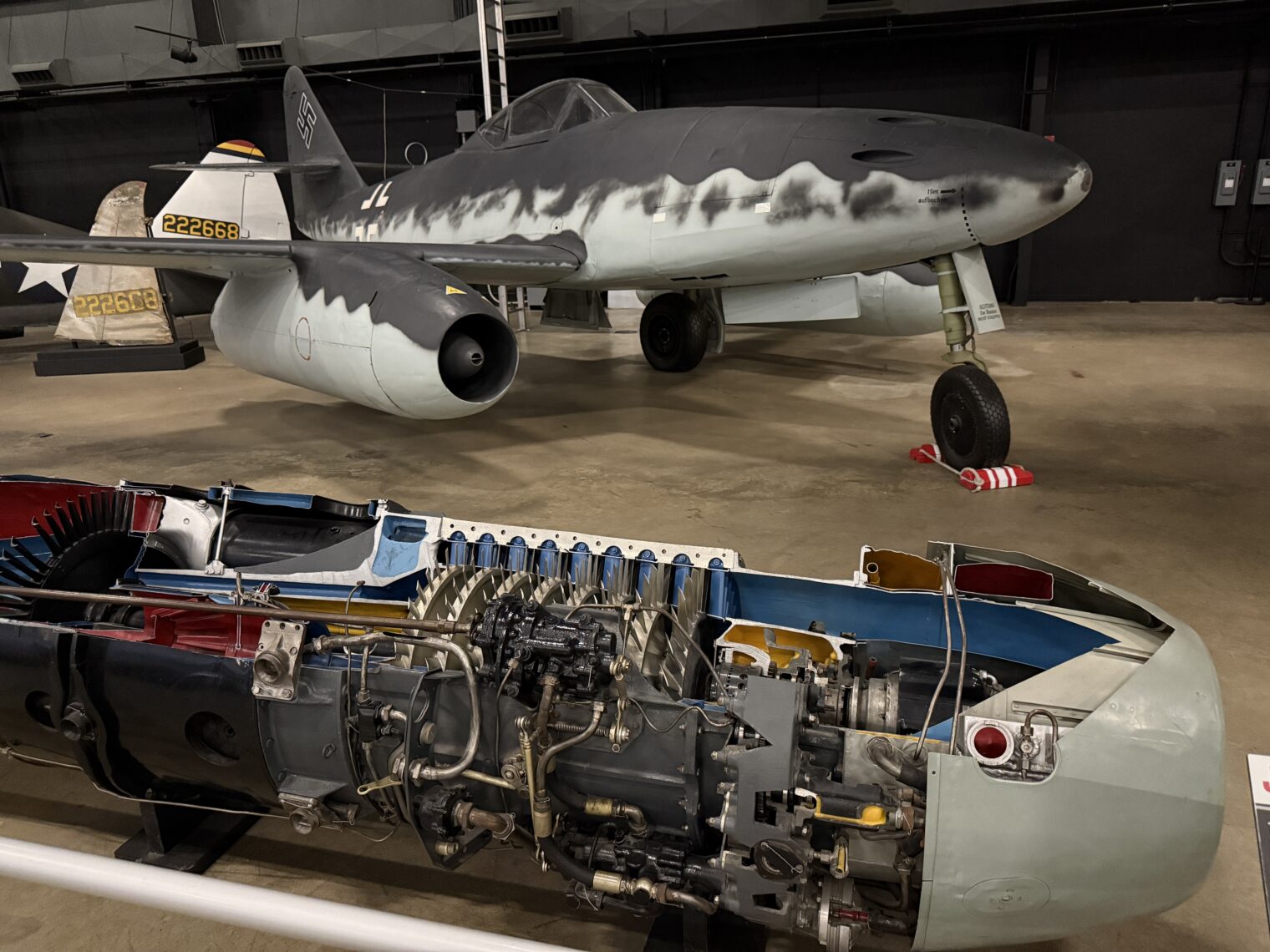
The B-24 is named “Strawberry Bitch”. Maybe after someone got a bill for an annual on the four-engine machine?
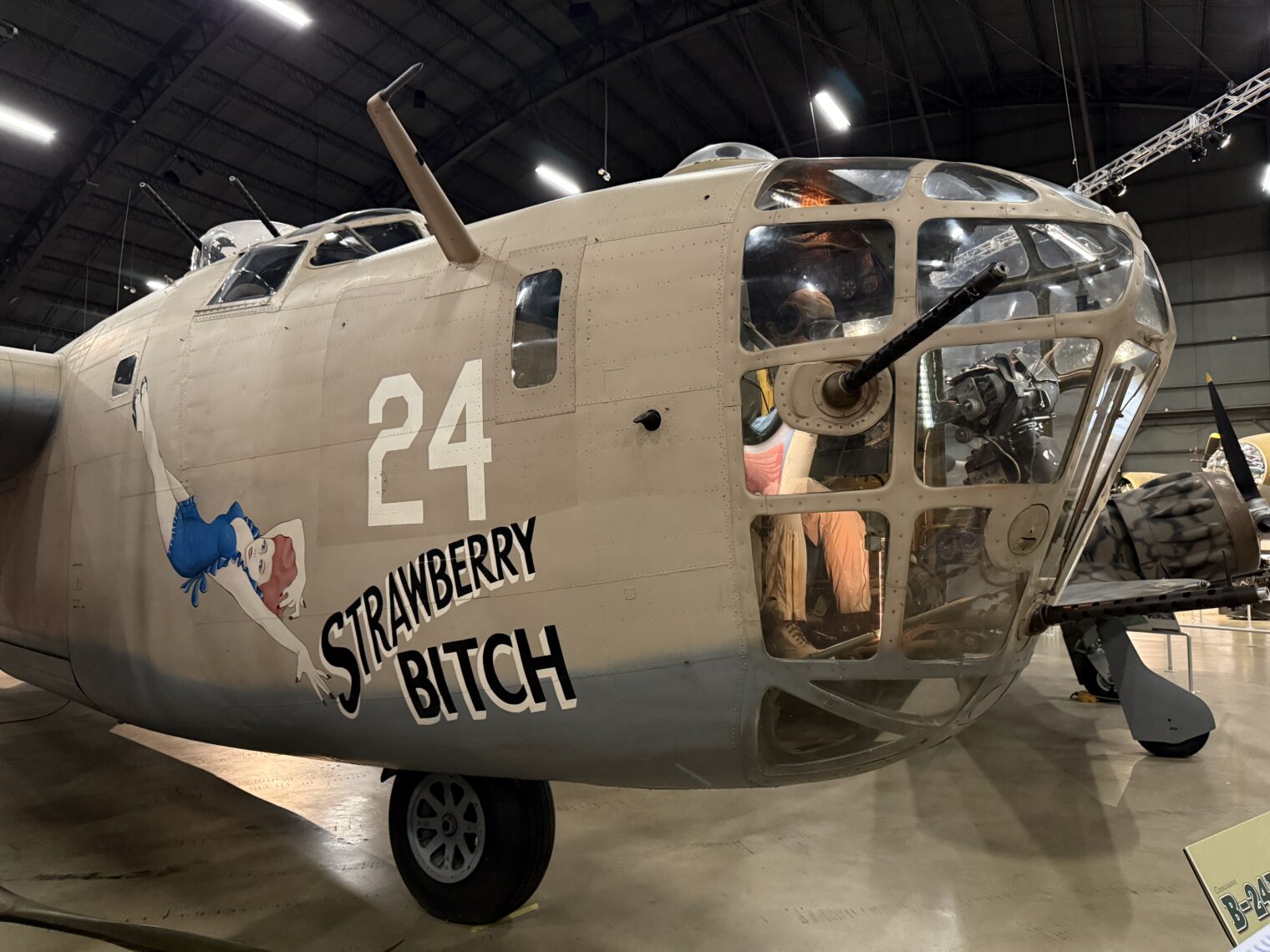
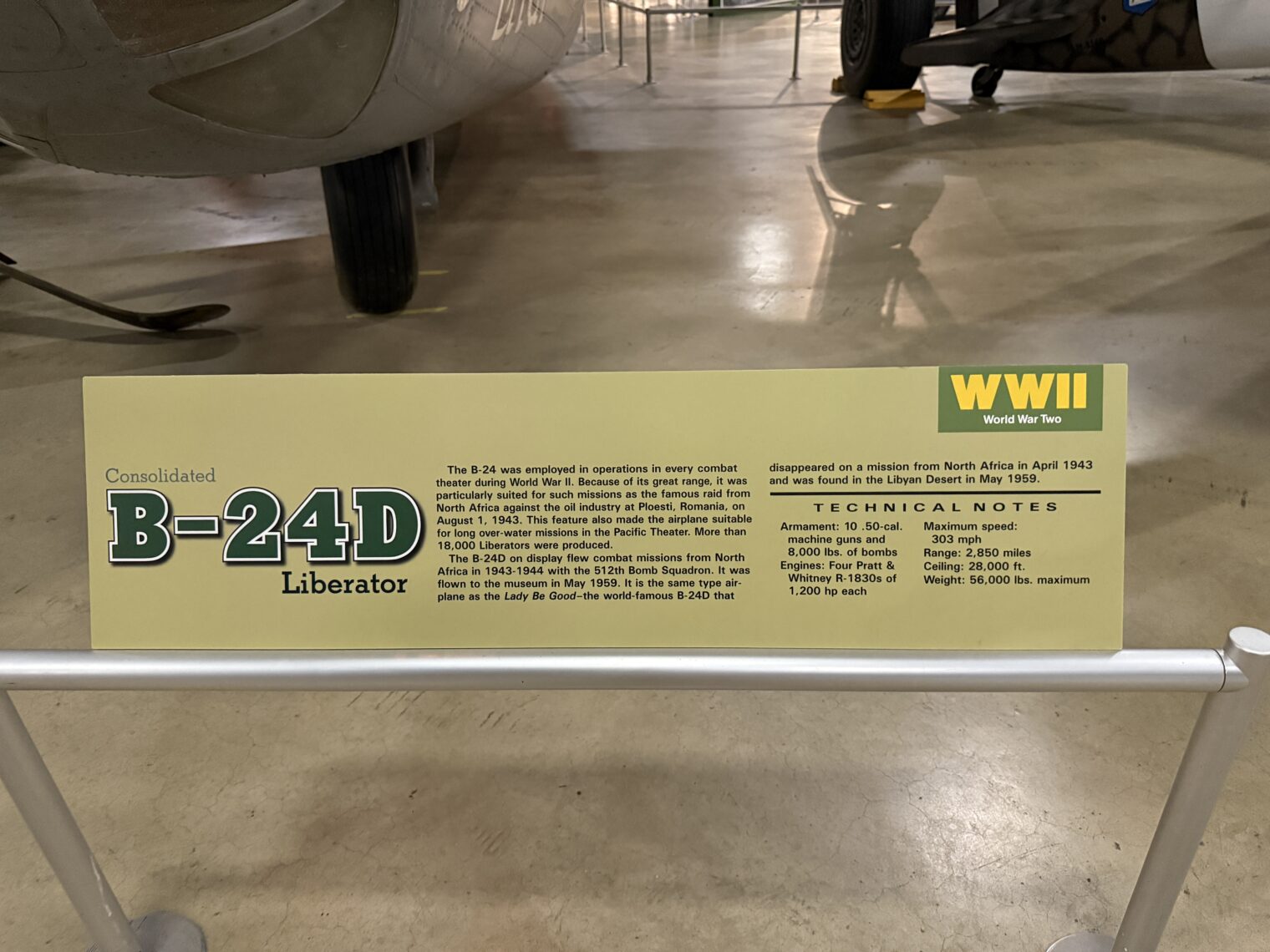
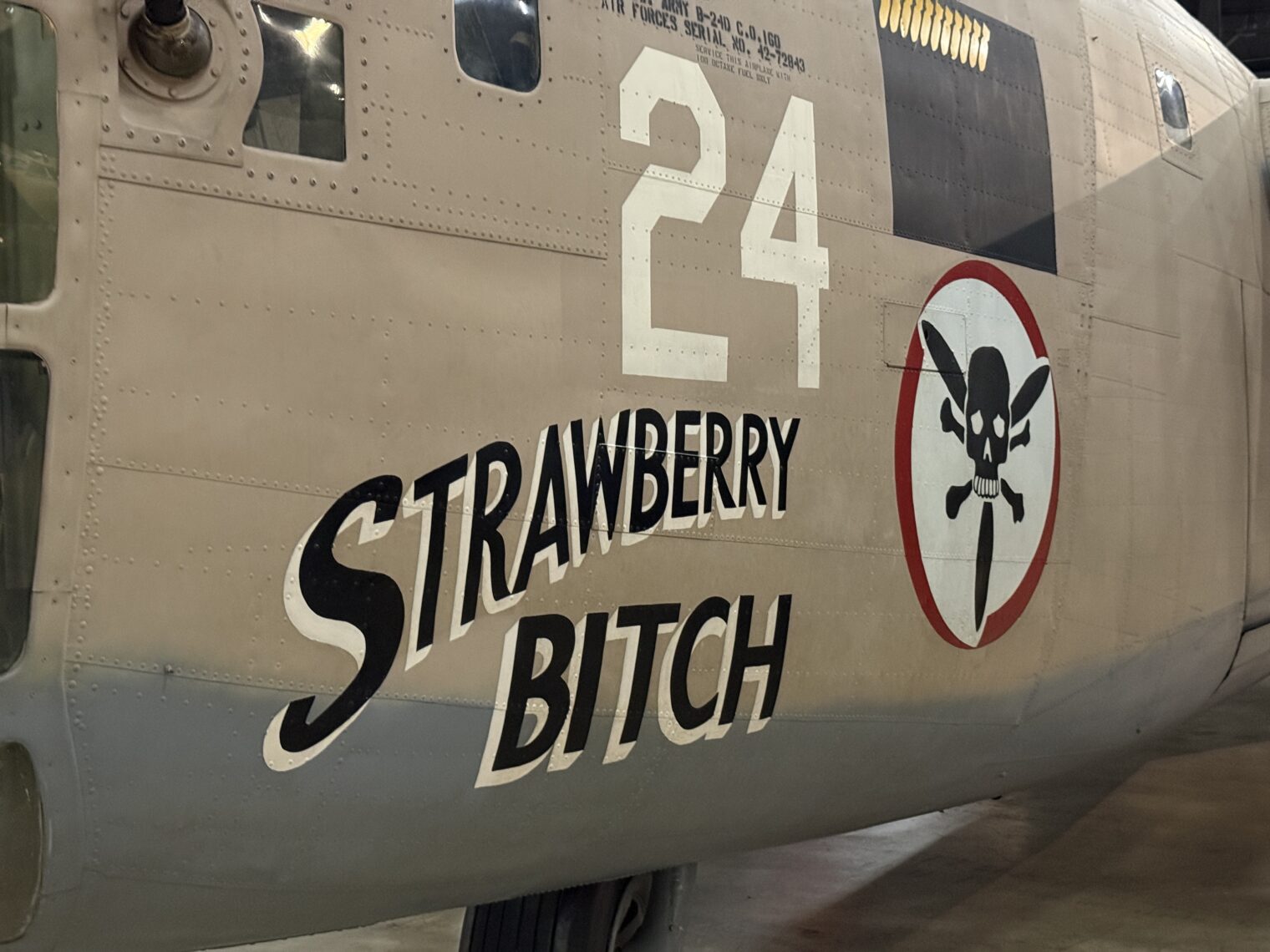
The WWII hangar includes an original Mitsubishi Zero and this unusual Kamikaze trainer (one flight school that it would be great to fail out of!):
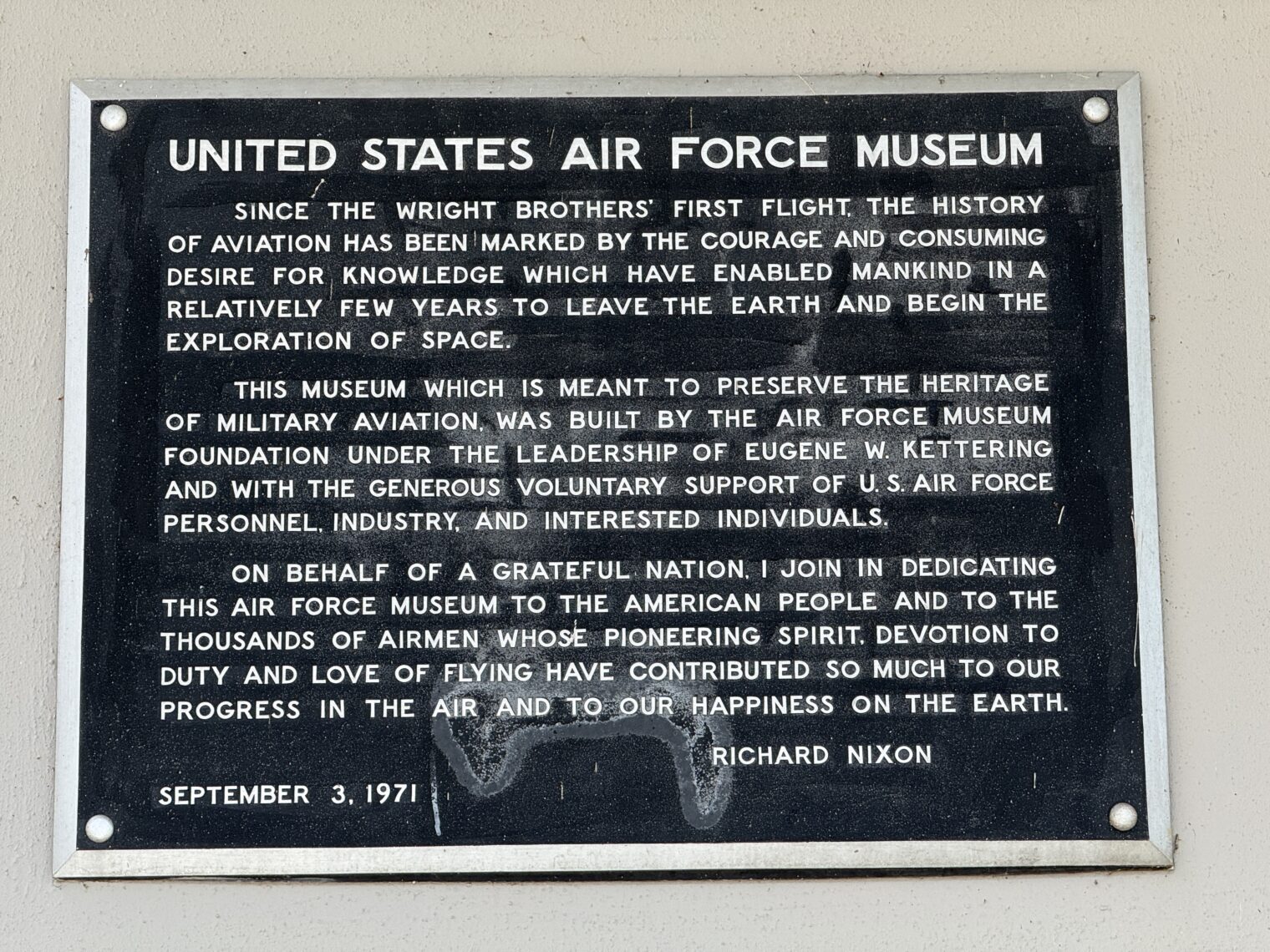
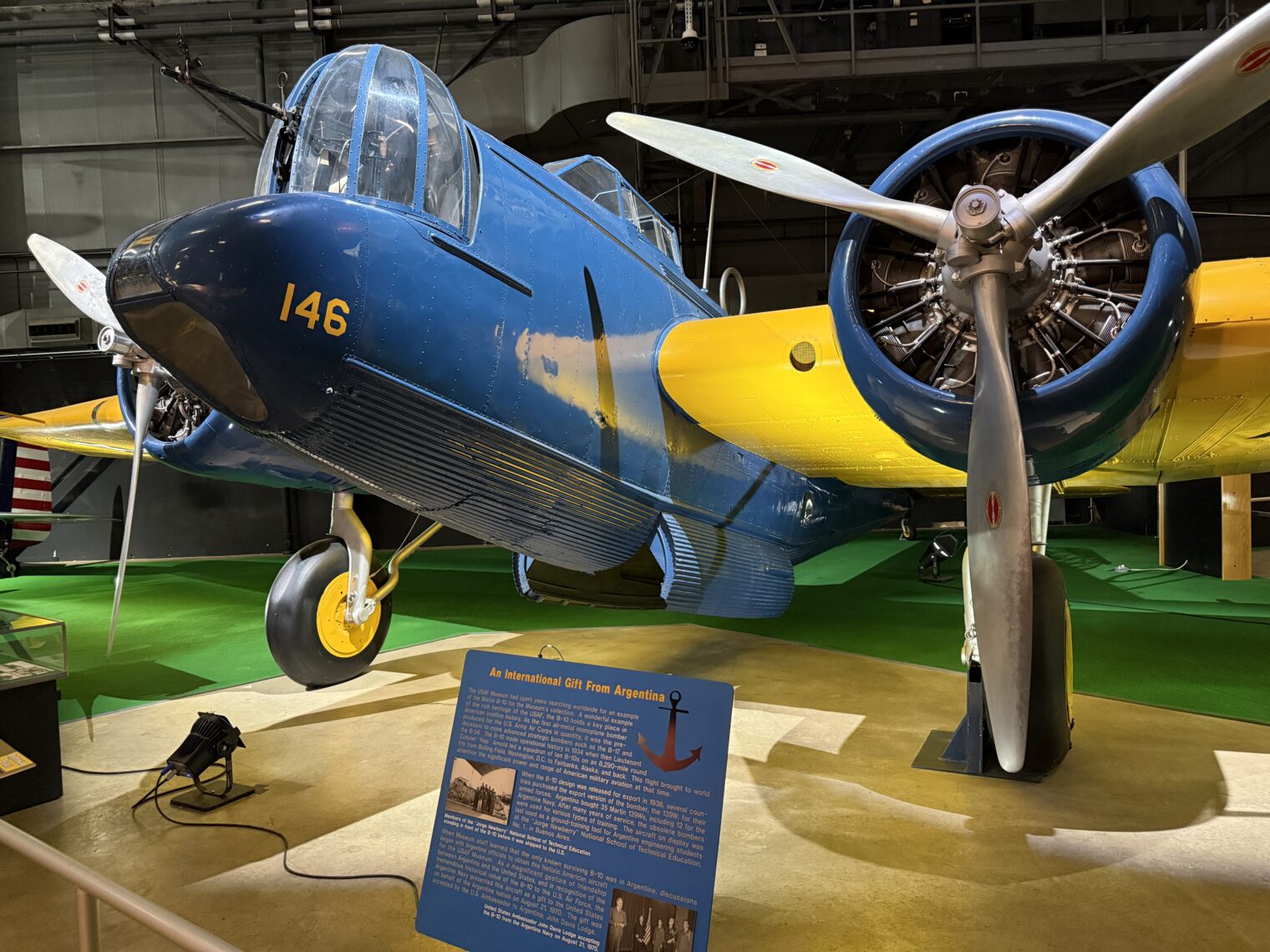
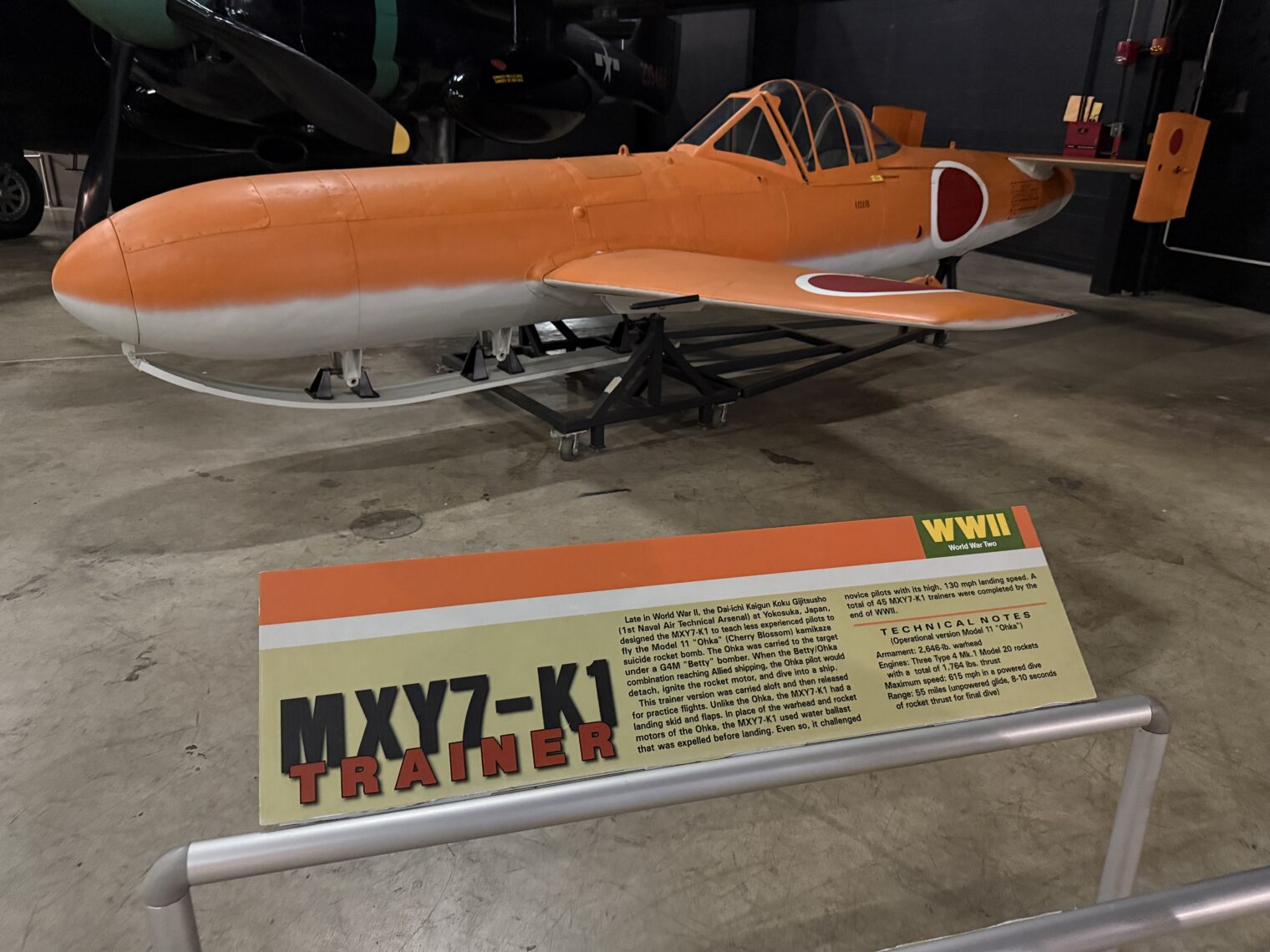
My father-in-law is from Germany, and when he was about 2, the Gestapo showed up to his father’s house and conscripted daddy at gunpoint into the Luftwaffe. He became an ace, and flew a 262, and got shot down by a Spitfire. The civilian train escaping from Germany after D-day with his little orphaned son was strafed by Spitfires–but, he escaped into a 2nd world shithole.
I remember going to the Dayton museum in about 1976, it was fascinating.
Why can’t we lay down our arms, as God admonishes us, and fix the damn problems in the world, without killing each other? Hell if I know.
Over and out.
Interesting that federally – funded museum showcases looser Langley, who lead one of the first failed government-funded projects.
Where are Wright brothers, who drew their inspiration and know-how from popular toys, books and Singer sewing machine plant technology and who supported themselves by owning a bicycle shop and nevertheless were first to achieve powered heavier then air flight.
Government projects – it is just not an American way.
Some people point to the Manhattan Project and early NASA, but their top roles were staffed with those who grew in European militaristic states where crown achievement was to get higher on official ranking ledger, European Jews and adjacents running from Hitler and later Nazi-adjacent Germans running from WWII victors. They were happy to be working for peanuts, benefits, and feeling of accomplishment, in some cases for not being prosecuted – the rest of life be damned.
Not possible to reproduce in America in a peace time.
What gullible gods we be to believe we can fly.
Could mere mortals perform such deeds and build such engines that legions of men should be transformed into winged angels dealing death?
Would woman rival valkyrie? Would shield maiden sprout wings?
Awaken this dream in bitterness that we are yet mortal or rouse us from the slumber, knowing we have pierced the sphere that melted Icarus.
> Would shield maiden sprout wings?
Just laying off the Wagner/Nietzsche a little, and focusing more on good old Goethe would have helped the Weimar Republic transition a little smoother to the next thing.
“Kill the Wabbit, Kill the Wabbit!—Oh, no I have killed the wabbit.” — Elmer Fudd
This really is a beautiful poem, thank you. It is the best kind–that which reaches right out and plucks reality. Realized this when my wife read it out loud to me. I sometimes forget, “The words of the prophets will be written on subway walls.”
852 suicide missiles were made. Only 57 actually got destroyed. No-one seems to know how many got piloted to the finish line. A small amount compared to arabian suicide bombings but still incredible to invest in a dedicated suicide trainer.
Great museum.
I visited it for the first time earlier this summer. High points for me were the B-17, B-29 and Waco glider.
The shear size and power of the B-52 was also awesome.
I worked with guys who served on and built some of the B-*s in WWII. Some of them were still working on the B-52 program in the ’90s. The B-52s used to rattle the windows and dishes in my apartment, which was right under the flight path. I think they are going to fly until the 2050s?
My girly probably would probably have said “Blonde Teufel”, Becky again.
Absolutely, the U.S. Space Force is going to be using B-52’s to patrol Mars 40 years from now.
Awesome design and air frame.